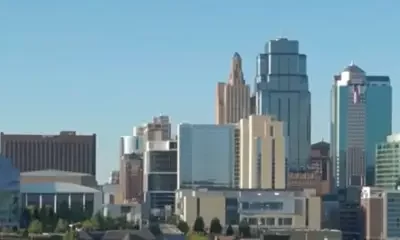Process
The Complete Package
Presentation is everything. Well, not everything: the product itself has to be good. But when someone orders a FireBoard, we want them to enjoy their experience from the moment they lay eyes on the box.
“First, I determine what is going inside the packaging,” says Andrew, the graphic designer here at FireBoard. He is behind all of the packaging and documentation that culminates in a great product presentation. “Will it include any accessories, a user guide, or other documentation?” From there, physical limitations are noted: are there hurdles regarding shipping shapes/sizes? Will an insert that takes up space be required?
Other tangibles are next on the list, such as the box itself. Andrew researches different types of designs but also looks at other inspiration sources. “Over the years, I have kept a lot of unique packaging,” says Andrew, “and I have asked the team to bring in anything that looks cool.” From there, a dieline is created.
A dieline is used in graphic design as a placeholder for assisting in the proper layout of a document that will be  diecut, a specialty cut from the packaging printer, as part of the finishing process. Andrew will reach out to the printer with physical dimensions of the packaging, general design, such as if information will be printed on all sides, and purpose. Sometimes they have a dieline that can be used, other times he sends them his version for finetuning. It’s a collaborative process to find the perfect solution.
diecut, a specialty cut from the packaging printer, as part of the finishing process. Andrew will reach out to the printer with physical dimensions of the packaging, general design, such as if information will be printed on all sides, and purpose. Sometimes they have a dieline that can be used, other times he sends them his version for finetuning. It’s a collaborative process to find the perfect solution.
Next up: the fine print. More specifically, what information, or copy, needs to be on the packaging? Think about the last product box you opened. Chances are it had a lot of copy on it, such as the name of the product, specifications or descriptions, trademarks and copyrights, and SKU. And that’s just the words. Andrew’s next consideration is images and graphics. “I have a small photography studio in my office for product photos,” says Andrew. Logos or special icons are part of this category, too.
According to Andrew, he can now take all the copy and images and design the artwork for the dieline. He creates a few design options and prints out an example to construct the packaging. “I feel like if you can see the design in the physical world rather than on a computer screen,” he says, “It can help you visualize the final product. Even if the example is not to scale.”
 Creating options helps with the approval process. “The team can tell me elements that they like from each of the designs and I can then hone in on the final design,” says Andrew. “This way I don’t have to start over one design at a time.” When the design is approved, it’s off to the printer.
Creating options helps with the approval process. “The team can tell me elements that they like from each of the designs and I can then hone in on the final design,” says Andrew. “This way I don’t have to start over one design at a time.” When the design is approved, it’s off to the printer.
The next phase begins with a quote request. Quantities, material, colors, print-type, finishes, and extras needed by the design, such as a hole punch or adhesives, are all considered. Artwork is also sent with the quote request, so the printer can have a full understanding of the project scope. Andrew says that sometimes the printer will request a sample of the product. “This usually depends on the design. To make sure the product and all accessories will fit.” Once the printer finalizes the dieline, a sample is sent back to Andrew for approval. He makes any changes needed, adjusting the artwork as required by the changes. Repeat until final approval on dieline and artwork is achieved.
Approval moves into production, and in a few weeks the new packaging arrives at FireBoard. “I open the shipment and assemble the packaging to see if everything looks good,” says Andrew. And because of the detail oriented and communicative process, it usually does. With limited storage space, the majority of FireBoard packaging comes flat: the team folds and assembles pieces in order to reach the final packaging presentation.
An often overlooked but exceedingly valuable aspect of a product, package design is an integral part of FireBoard’s goal to set a high industry standard. Much like the product development itself, it starts with an idea. “As a designer,” says Andrew, “It is one of the most satisfying feelings to have an idea start in your mind and then have it become a tangible object.”










Leave a reply